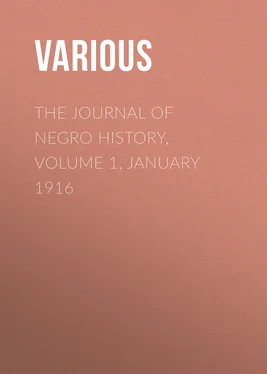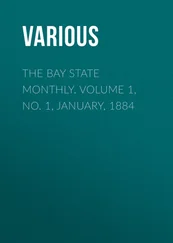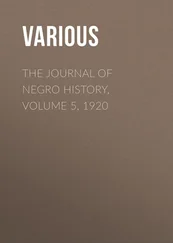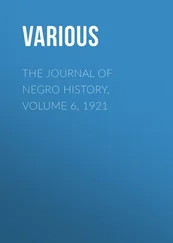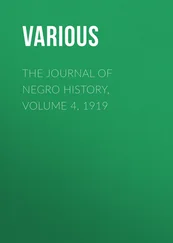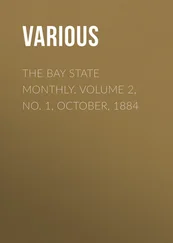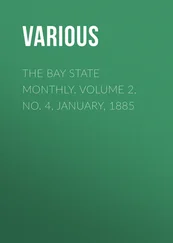Various - The Journal of Negro History, Volume 1, January 1916
Здесь есть возможность читать онлайн «Various - The Journal of Negro History, Volume 1, January 1916» — ознакомительный отрывок электронной книги совершенно бесплатно, а после прочтения отрывка купить полную версию. В некоторых случаях можно слушать аудио, скачать через торрент в формате fb2 и присутствует краткое содержание. Жанр: foreign_antique, periodic, История, foreign_edu, на английском языке. Описание произведения, (предисловие) а так же отзывы посетителей доступны на портале библиотеки ЛибКат.
- Название:The Journal of Negro History, Volume 1, January 1916
- Автор:
- Жанр:
- Год:неизвестен
- ISBN:нет данных
- Рейтинг книги:5 / 5. Голосов: 1
-
Избранное:Добавить в избранное
- Отзывы:
-
Ваша оценка:
- 100
- 1
- 2
- 3
- 4
- 5
The Journal of Negro History, Volume 1, January 1916: краткое содержание, описание и аннотация
Предлагаем к чтению аннотацию, описание, краткое содержание или предисловие (зависит от того, что написал сам автор книги «The Journal of Negro History, Volume 1, January 1916»). Если вы не нашли необходимую информацию о книге — напишите в комментариях, мы постараемся отыскать её.
The Journal of Negro History, Volume 1, January 1916 — читать онлайн ознакомительный отрывок
Ниже представлен текст книги, разбитый по страницам. Система сохранения места последней прочитанной страницы, позволяет с удобством читать онлайн бесплатно книгу «The Journal of Negro History, Volume 1, January 1916», без необходимости каждый раз заново искать на чём Вы остановились. Поставьте закладку, и сможете в любой момент перейти на страницу, на которой закончили чтение.
Интервал:
Закладка:
It was in fact a brighter day for the colored people. In 1840 an observer said that they had improved faster than any other people in the city. The Cincinnati Gazette after characterizing certain Negroes as being imprudent and vicious, said of others: "Many of these are peaceable and industrious, raising respectable families and acquiring property." 36 36 The Cincinnati Daily Gazette , September 14, 1841.
Mr. James H. Perkins, a respectable citizen of the city, asserted that the day school which the colored children attended had shown by examination that it was as good as any other in the city. He said further: "There is no question, I presume, that the colored population of Cincinnati, oppressed as it has been by our state laws as well as by prejudice, has risen more rapidly than almost any other people in any part of the world." 37 37 The Philanthropist , July 21, 1840.
Within three or four years their property had more than doubled; their schools had become firmly established, and their churches and Sunday Schools had grown as rapidly as any other religious institutions in the city. Trusting to good conduct and character, they had risen to a prosperous position in the eyes of those whose prejudices would "allow them to look through the skin to the soul." 38 38 Ibid.
The colored people had had too many enemies in Cincinnati, however, to expect that they had overcome all opposition. The prejudice of certain labor groups against the Negroes increased in proportion to the prosperity of the latter. That they had been able to do as well as they had was due to the lack of strength on the part of the labor organizations then forming to counteract the sentiment of fair play for the Negroes. Their labor competed directly with that of the whites and began again to excite "jealousy and heart burning." 39 39 The Cincinnati Daily Gazette , September 14, 1841.
The Germans, who were generally toiling up from poverty, seemed to exhibit less prejudice; but the unfortunate Irish bore it grievously that even a few Negroes should outstrip some of their race in the economic struggle.
In 1841 there followed several clashes which aggravated the situation. In the month of June one Burnett referred to as "a mischievous and swaggering Englishman running a cake shop," had harbored a runaway slave. When a man named McCalla, his reputed master, came with an officer to reclaim the fugitive, Burnett and his family resisted them. The Burnetts were committed to answer for this infraction of the law and finally were adequately punished. The proslavery mob which had gathered undertook to destroy their home but the officials prevented them. Besides, early in August according to a report, a German citizen defending his blackberry patch near the city was attacked by two Negroes and stabbed so severely that he died. Then about three weeks thereafter, according to another rumor, a very respectable lady was insultingly accosted by two colored men, and when she began to flee two others rudely thrust themselves before her on the sidewalk. But in this case, as in most others growing out of rumors, no one could ever say who the lady or her so-called assailants were. At the same time, too, the situation was further aggravated by an almost sudden influx of irresponsible Negroes from various parts, increasing the number of those engaged in noisy frolics which had become a nuisance to certain white neighbors. 40 40 A detailed account of these clashes is given in The Cincinnati Daily Gazette , September 14, 1841.
Accordingly, on Tuesday, the twenty-ninth of August, there broke out on the corner of Sixth and Broadway a quarrel in which two or three persons were wounded. On the following night the fracas was renewed. A group of ruffians attacked the Dumas Hotel, a colored establishment, on McCallister Street, demanding the surrender of a Negro, who, they believed, was concealed there. As the Negroes of the neighborhood came to the assistance of their friends in the hotel the mob had to withdraw. On Thursday night there took place another clash between a group of young men and boys and a few Negroes who seriously wounded one or two of the former. On Friday evening the mob incited to riotous acts by an influx of white ruffians, seemingly from the steamboats and the Kentucky side of the river, openly assembled in Fifth Street Market without being molested by the police, armed themselves and marched to Broadway and Sixth Street, shouting and swearing. They attacked a colored confectionery store near by, demolishing its doors and windows. James W. Piatt, an influential citizen, and the mayor then addressed the disorderly persons, vainly exhorting them to peace and obedience to the law. Moved by passionate entreaties to execute their poorly prepared plan, the assailants advanced and attacked the Negroes with stones. The blacks, however, had not been idle. They had secured sufficient guns and ammunition to fire into the mob such a volley that it had to fall back. The aggressors rallied again, however, only to be in like manner repulsed. Men were wounded on both sides and carried off and reported dead. The Negroes advanced courageously, and according to a reporter, fired down the street into the mass of ruffians, causing a hasty retreat. This mélée continued until about one o'clock when a part of the mob secured an iron six pounder, hauled it to the place of combat against the exhortations of the powerless mayor, and fired on the Negroes. With this unusual advantage the blacks were forced to retreat, many of them going to the hills. About two o'clock the mayor of the city brought out a portion of the "military" which succeeded in holding the mob at bay. 41 41 The Cincinnati Daily Gazette , September, 1841.
On the next day the colored people in the district under fire were surrounded by sentinels and put under martial law. Indignation meetings of law-abiding citizens were held on Saturday to pass resolutions, denouncing abolitionists and mobs and making an appeal to the people and the civil authorities to uphold the law. The Negroes also held a meeting and respectfully assured the mayor and citizens that they would use every effort to conduct themselves orderly and expressed their readiness to give bond according to the law of 1807 or leave the city quietly within a specified time. But these steps availed little when the police winked at this violence. The rioters boldly occupied the streets without arrest and continued their work until Sunday. The mayor, sheriff and marshal went to the battle ground about three o'clock but the mob still had control. The officers could not even remove those Negroes who complied with the law of leaving. The authorities finally hit upon the scheme of decreasing the excitement by inducing about 300 colored men to go to jail for security after they had been assured that their wives and children would be protected. The Negroes consented and were accordingly committed, but the cowardly element again attacked these helpless dependents like savages. At the same time other rioters stormed the office of The Philanthropist and broke up the press. The mob continued its work until it dispersed from mere exhaustion. The Governor finally came to the city and issued a proclamation setting forth the gravity of the situation. The citizens and civil authorities rallied to his support and strong patrols prevented further disorder. 42 42 A very interesting account of this riot is given in Howe's "Historical Collections of Ohio," pages 226-228.
It is impossible to say exactly how many were killed and wounded on either side. It is probable that several were killed and twenty or thirty variously wounded, though but few dangerously. Forty of the mob were arrested and imprisoned. Exactly what was done with all of them is not yet known. It seems that few, if any of them, however, were severely punished. The Negroes who had been committed for safe keeping were thereafter disposed of in various ways. Some were discharged on certificates of nativity, others gave bond for their support and good behavior, a few were dismissed as non-residents, a number of them were discharged by a justice of the Court of Common Pleas, and the rest were held indefinitely. 43 43 It was discovered that not a few of the mob came from Kentucky. About eleven o'clock on Saturday night a bonfire was lighted on that side of the river and loud shouts were sent up as if triumph had been achieved. "In some cases." says a reporter, "the directors were boys who suggested the point of attack, put the vote, declared the result and led the way."–Cin. Daily Gaz., Sept. 14, 1841.
Интервал:
Закладка:
Похожие книги на «The Journal of Negro History, Volume 1, January 1916»
Представляем Вашему вниманию похожие книги на «The Journal of Negro History, Volume 1, January 1916» списком для выбора. Мы отобрали схожую по названию и смыслу литературу в надежде предоставить читателям больше вариантов отыскать новые, интересные, ещё непрочитанные произведения.
Обсуждение, отзывы о книге «The Journal of Negro History, Volume 1, January 1916» и просто собственные мнения читателей. Оставьте ваши комментарии, напишите, что Вы думаете о произведении, его смысле или главных героях. Укажите что конкретно понравилось, а что нет, и почему Вы так считаете.
